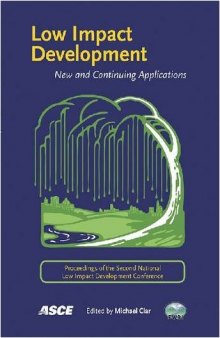 جزییات کتاب
جزییات کتاب
Low impact development (LID) began as an environmentally friendly method to conserve natural water sources, manage storm water runoff, and preserve water quality. Today, LID encompasses methods of construction and engineering that preserve the ecosystem as a whole. This proceedings specifically highlights new and continuing low impact practices, including research, recent developments, and community adoption and acceptance. Coastal applications are also emphasized. The papers provide a good overview of the current technical issues as well as areas in need of research. The topics addressed include: local codes, regulations, and policy; LID design and assessment tools; LID best management practices in the areas of bioretention, swales, green roofs, and permeable pavements; and case studies. ''Low Impact Development: New and Continuing Applications'' contains some of the papers presented at the 2nd National Low Impact Development Conference March 12-14, 2007, in Wilmington, North Carolina. This publication is useful to students and academics involved in environmental engineering and low impact development, landscape architects, soil scientists, design professionals, and water program administrators



 دانلود کتاب
دانلود کتاب

 جزییات کتاب
جزییات کتاب





 این کتاب رو مطالعه کردید؟ نظر شما چیست؟
این کتاب رو مطالعه کردید؟ نظر شما چیست؟
